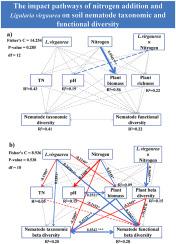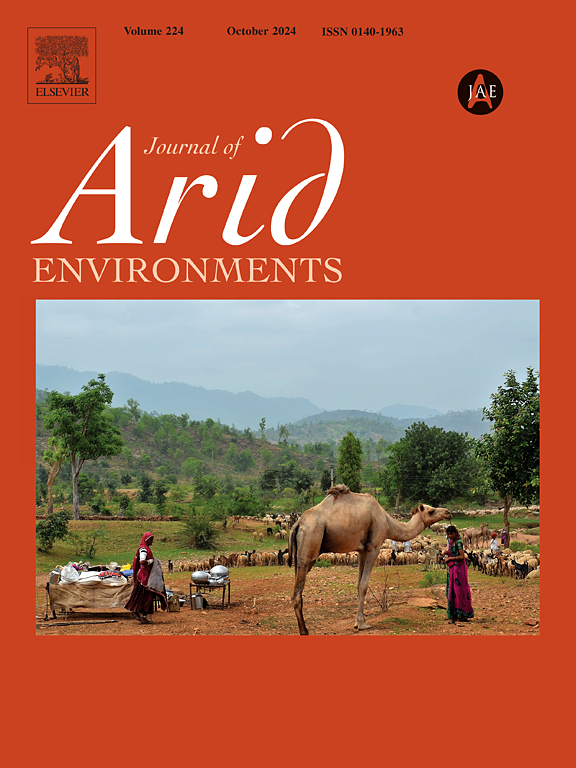The expansion of poisonous weed Ligularia virgaurea leads to functional heterogeneity of nematode community
IF 2.5
3区 环境科学与生态学
Q2 ECOLOGY
引用次数: 0
Abstract
Soil nematodes are an important component of underground communities and are highly sensitive to external disturbances and changes. Nitrogen deposition and dominant poisonous weeds are important factors contributing to global climate change. However, much less is known about the interaction between nitrogen deposition and poisonous weed on the taxonomic and functional diversity of nematode community on the Tibetan Plateau. We established a full factorial experiment between nitrogen addition treatment (nitrogen addition and ambient) with poisonous weed treatment (with Ligularia virgaurea and without Ligularia virgaurea) on the Tibetan Plateau. We quantified plant diversity, plant biomass, and edaphic properties to assess the effects of nitrogen addition and poisonous weed Ligularia virgaurea and their interactions on both taxonomic and functional alpha/beta diversity of soil nematode communities. Ligularia virgaurea indirectly decreased nematode taxonomic and functional beta diversity through plant biomass (standardized path coefficients: −0.2146) and directly increased nematode taxonomic and functional beta diversity (standardized path coefficients:0.1891 and 0.3470, respectively). Nitrogen addition directly (standardized path coefficients: −0.2069) and indirectly (through pH and plant biomass, standardized path coefficients: −0.3468 and 0.2144, respectively) affected nematode taxonomic and functional beta diversity. The interaction between Ligularia virgaurea and nitrogen addition indirectly decreased taxonomic and functional beta diversity through plant beta diversity (standardized path coefficients: 0.3665). Our results indicate a pattern of functional heterogeneity of nematode community following the expansion of poisonous weed Ligularia virgaurea, which highlights the important roles of poisonous weed in maintaining biodiversity and ecosystem functions and provides an alternative to realize the comprehensive utilization of poisonous weeds on the Qinghai-Tibet Plateau.

毒草柳条的扩张导致线虫群落功能的异质性
土壤线虫是地下群落的重要组成部分,对外界干扰和变化高度敏感。氮沉降和优势毒草是导致全球气候变化的重要因素。通过定量分析植物多样性、生物量和土壤特性,评价氮肥添加和毒草对土壤线虫群落分类和功能α / β多样性的影响。甜瓜通过植物生物量间接降低线虫的分类和功能β多样性(标准化路径系数为- 0.2146),直接增加线虫的分类和功能β多样性(标准化路径系数分别为0.1891和0.3470)。氮的直接添加(标准化通径系数为- 0.2069)和间接添加(通过pH和植物生物量,标准化通径系数分别为- 0.3468和0.2144)影响了线虫的分类和功能多样性。加氮与黄橐吾的交互作用通过植物β多样性间接降低了植物的分类和功能β多样性(标准化通径系数为0.3665)。
本文章由计算机程序翻译,如有差异,请以英文原文为准。
求助全文
约1分钟内获得全文
求助全文
来源期刊

Journal of Arid Environments
环境科学-环境科学
CiteScore
5.70
自引率
3.70%
发文量
144
审稿时长
55 days
期刊介绍:
The Journal of Arid Environments is an international journal publishing original scientific and technical research articles on physical, biological and cultural aspects of arid, semi-arid, and desert environments. As a forum of multi-disciplinary and interdisciplinary dialogue it addresses research on all aspects of arid environments and their past, present and future use.
 求助内容:
求助内容: 应助结果提醒方式:
应助结果提醒方式:


